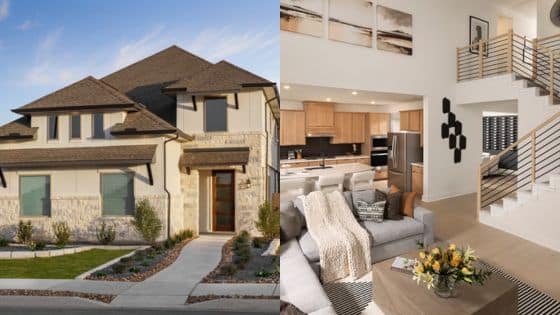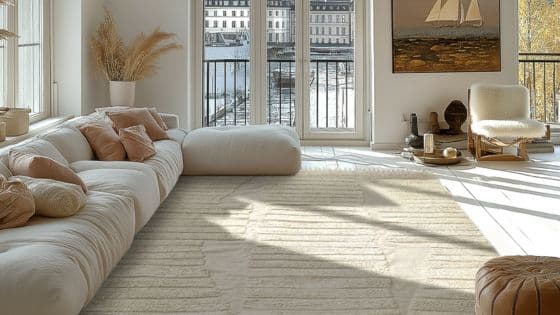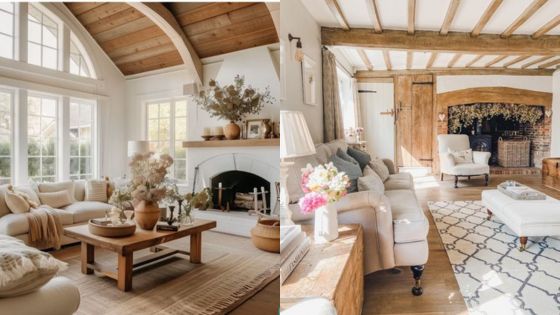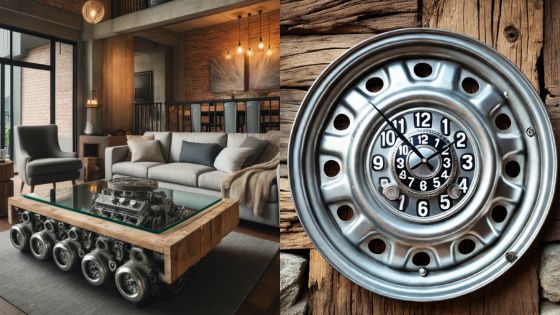Moving into a new home doesn’t always mean starting from scratch. In truth, one of the most creative and cost-effective ways to settle into a new space is by working and designing with what you already own. From vintage coffee tables to hand-me-down armoires, your existing furniture and decor can bring a unique sense of character and continuity into your next chapter. With a bit of planning, imagination, and flexibility, those familiar pieces can feel brand new in a different setting.

Start With What You Love
Before diving into floor plans or Pinterest boards, take stock of your current belongings. What pieces do you enjoy using or seeing every day? Whether it’s a cozy reading chair, a framed print with sentimental value, or a set of vintage glassware, start with what sparks a genuine connection.
Let this be your foundation. Designing with intention makes a space feel personal, and beginning with meaningful items sets the tone for the rest of the home. Don’t feel pressured to keep everything, as curating is part of the process. If something no longer serves a purpose or feels out of place, give yourself permission to donate or sell it.
Edit Thoughtfully for Better Flow
One of the main challenges of integrating old pieces into a new home is scale and proportion. What worked in a spacious living room might feel oversized in a smaller apartment, or vice versa. Be prepared to rearrange and pare back as you go. If something disrupts the flow of a room, it may need a different placement or purpose.
Try to design around focal points and sightlines. One of the most common mistakes people make is forgetting to keep the main pathways clear and leave enough breathing room between furniture. The goal isn’t to force things into place but to create balance. Sometimes, all a piece needs is better lighting, a different wall, or a change of perspective.
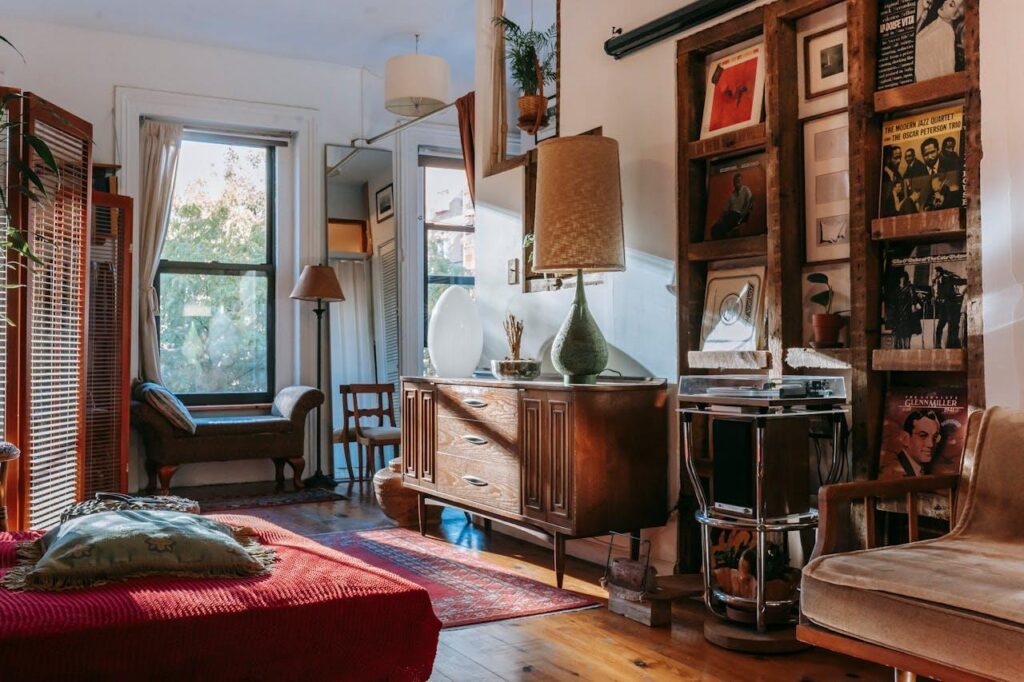
Caption: Using old-style furniture in your modern home can give you that perfect, cozy, retro look.
Mix Styles for a Lived-In Look
The beauty of designing with what you already own is that not everything has to match. In truth, blending different styles can make a space feel more dynamic and lived-in. A modern home doesn’t need to be stripped of vintage charm, and a rustic space can still welcome clean lines and bold colors. So, pair an antique dresser with a sleek mirror. Add bold, contemporary art to a wall of classic wood furniture. Layer throw pillows in updated prints on a sofa you’ve had for years. These juxtapositions create interest and help old pieces feel intentional rather than out of place.
Use Accessories to Refresh the Familiar
Sometimes, all it takes to breathe new life into an old item is a change in context. Swap out cabinet hardware, add a new lampshade, or reupholster a well-loved chair. Layering in updated textiles like curtains, rugs, and throws can completely transform a room without needing to replace your existing furniture.
Even small details like houseplants, vases, and picture frames can shift the tone. Don’t underestimate how much impact these accents can make, especially when you’re working with a mix of old and new. Candles, textiles, and color accents can tie together even the most contrasting pieces with subtle cohesion.
Let Function Guide Form
Every home is different, and your lifestyle may have shifted since you last decorated. That’s why functionality should lead the design process. Maybe that oversized dining table no longer fits your everyday needs, but could it become a work-from-home desk? Could your underused bookshelf become stylish storage in the kitchen?
Rethinking how you use your items can open up space and possibilities. Rather than chasing a magazine-ready aesthetic, let the way you live guide the layout and design. A beautiful home is one that works for the people in it.
Also, if you’re in the process of relocating, make sure your furniture and decor arrive in one piece. Hiring professional movers can be a big help, but only if your movers are dependable. Therefore, take a little time to research moving companies thoroughly so you can avoid fraudsters who might take advantage of the transition. Look for reviews, verify credentials, and always request a written estimate before agreeing to anything.

Caption: When moving, you have to be very careful and make sure your old furniture or decor doesn’t get damaged during the transport.
Create Cohesion With Color
One of the easiest ways to unify a room with mismatched or inherited items is through color. A consistent color palette can make everything feel more intentional, even if the styles vary. That doesn’t mean painting everything white or beige. Choose a few core tones and carry them through the space.
You can tie different areas together with throw pillows, artwork, rugs, or paint. If your pieces are in good shape but visually clash, consider refinishing or repainting them in complementary colors. With a bit of creativity, your collection of seemingly random pieces can tell a cohesive story.
Make Room for Sentimental Pieces
Some items don’t match the style of your new home, and that’s okay. If they carry emotional significance, they deserve a place. That inherited rocking chair, the quirky side table from your first apartment, or your child’s handmade wall art can all ground your space in memory.
Place these items where they’ll be appreciated. Let them be conversation starters. Surrounding yourself with pieces that have history can bring warmth and authenticity to any design, no matter the trend or aesthetic. If you happen to collect anything unique, quirky toy collectibles, or nostalgic accents, they can also become surprising and delightful design features.
Stay Open to Evolving
Your new home won’t look perfect on day one, and that’s a good thing. Design takes time. Living in a space allows you to see what works and what doesn’t. Be patient with the process and stay open to change.
As you get more comfortable, you’ll find new ways to use what you have and possibly discover a few gaps you want to fill along the way. When you do shop for new items, they’ll be thoughtful additions rather than impulse buys.
Designing With What You Already Own
Designing with what you already own is more than just a budget-friendly approach; it’s a way to root your new home in familiarity, memory, and resourcefulness. It challenges you to look at your belongings with fresh eyes and embrace creativity over consumerism. And when styled with care and purpose, the pieces you choose can continue telling your story, just in a new setting.
- 0shares
- Facebook0
- Pinterest0
- Twitter0
- Reddit0








